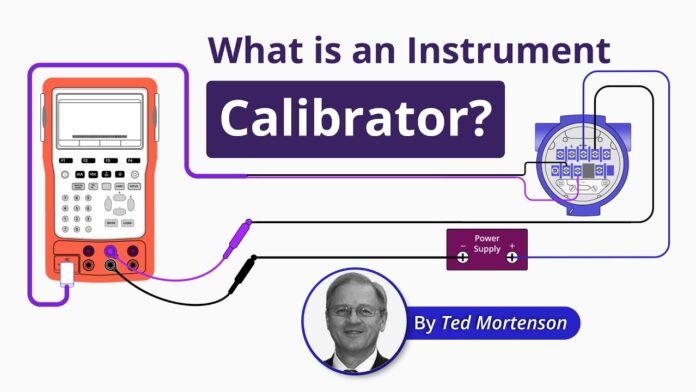What is an Instrument Calibrator?
Các câu hỏi, thắc mắc, thông tin liên quan đến sản phẩm được giới thiệu trong video dưới đây từ khâu mua sắm, lựa chọn, sử dụng, cài đặt hay thay thế, vui lòng liên hệ với INO Team để được hỗ trợ và tư vấn kịp thời.
– – – LƯU Ý – – -: Với những thiết bị không được liệt kê ở đây không có nghĩa là chúng tôi không hỗ trợ được bạn, công ty chúng tôi chuyên đề xuất giải pháp, tư vấn mua sắm và cung cấp thiết bị về cảm biến công nghiệp, đo lường và tự động hoá cho các công ty trong và ngoài nước.
Công ty TNHH Giải pháp và Công nghệ Đo lường INO, nhà cung cấp các thiết bị đo lường và tự động hóa công nghiệp.
▶ C’mon over to https://realpars.com where you can learn PLC programming faster and easier than you ever thought possible!
=============================
▶ Check out the full blog post over at
https://realpars.com/instrument-calibrator
=============================
⌚Timestamps:
00:00 – Intro
00:56 – Why calibrate instruments?
01:31 – Instrument calibrator types
01:34 – 1) Block (dry-well)
01:51 – 2) Fluid bath
02:05 – 3) Pneumatic
03:10 – 4) Signal reference calibrators
04:42 – Source and simulate modes
05:24 – Troubleshooting a 2-wire current loop
=============================
In this video, we’re going to discuss instrument calibrator and show you how the instrument calibrators can be used in the process control industry for calibration and troubleshooting.
If the quantity being measured is not being accurately represented by the measuring instrument, the measuring instrument possibly requires calibration.
Instruments require calibration for many reasons:
– Equipment degrades over time.
– Anytime maintenance is performed on an instrument, it needs to be calibrated.
– Often the range of an instrument is changed thereby requiring calibration.
Let’s look at a few different types of instrument calibrators.
1) Block or dry-well calibrators are used to calibrate temperature probes such as RTDs and Thermocouples. The temperature sensor is placed in the dry-well calibrator. A metal block is heated and held at a precise temperature.
2) A Fluid Bath Calibrator is similar to a dry-well calibrator as the temperature sensor is placed inside. The big difference is the sensor is immersed in a fluid that is heated and held at a precise temperature.
3) Pneumatic Calibrators provide regulated pressure as needed to calibrate, test, or troubleshoot pressure instruments.
A) One of the oldest and most accurate pneumatic calibrators is the Dead Weight Tester (or DWT).
A DWT will likely be found mounted permanently in the instrument shop. The DWT has several Dead Weights that are precisely calibrated in pressure units.
B) Another type of pneumatic calibrator is the Hand Held Aspirator. A scissor-like grip adjusts the output pressure and a digital gauge indicates the pressure readout.
Hand-held aspirators are particularly useful when field testing and calibrating devices such as pressure switches.
4) Signal Reference Calibrators can output a variety of electrical signals. There are many different types of Signal Reference Calibrators available to produce electrical outputs such as voltage, current, ohms, frequency, etc.
Many signal reference calibrators are capable of simulating thermocouples and RTDs as well. This type of calibrator often referred to as a Simulator, can accurately reproduce a sensor output and display that output in the variable units it represents.
Many signal reference calibrators also perform measurement functions similar to a Digital Multimeter.
These multifunction calibrators are very useful. For example, a Thermocouple transmitter can be calibrated across its entire temperature range using the Thermocouple Simulation function of the Calibrator.
The user selects the Thermocouple type on a calibrator and enters the required simulation temperature. The resulting transmitter mA current output is displayed by the measurement function of the calibrator.
As a troubleshooting tool, a multifunction calibrator is invaluable. With a few quick measurements, a Field Tech can determine if a fault is caused by the sensor or the transmitter.
Source and Simulate are 2 terms commonly used by calibrator vendors to describe modes of operation.
– In Source mode, the calibrator generates calibrated signals for testing and calibrating process instruments.
– In Simulate mode, the calibrator replaces or simulates a transmitter in a 2-wire loop configuration. The calibrator can be adjusted to supply known settable test currents.
=============================
You might want to review our other articles:
DP Flow Transmitter Testing and Recalibration https://realpars.com/calibration
What is Sensor Calibration and Why is it Important? https://realpars.com/sensor-calibration
What are 2-Wire and 4-Wire Transmitter Output Loops? https://realpars.com/transmitter-wiring
=============================
Missed our most recent videos? Watch them here:
https://realpars.com/plcnext-starterkit
https://realpars.com/motor-starter
https://realpars.com/omron-plc
=============================
To stay up to date with our last videos and more lessons, make sure to subscribe to this YouTube channel:
http://bit.ly/realpars
=============================
TWEET THIS VIDEO https://ctt.ac/zdHgf
=============================
Follow us on Facebook: https://www.facebook.com/therealpars
Follow us on Twitter: https://twitter.com/realpars
Follow us on LinkedIn https://www.linkedin.com/company/realpars
Follow us on Instagram https://www.instagram.com/realparsdotcom
#RealPars #instrument #Calibrator
Web: www.ino.com.vn | Mail: info@ino.com.vn
Tel: (+84) 028 73000184 | Hotline: 0947200184
Website: http://www.ino.com.vn Website: http://www.ino.vn
Please visit INO YouTube Channel for more Video
https://www.youtube.com/inomeasure




















